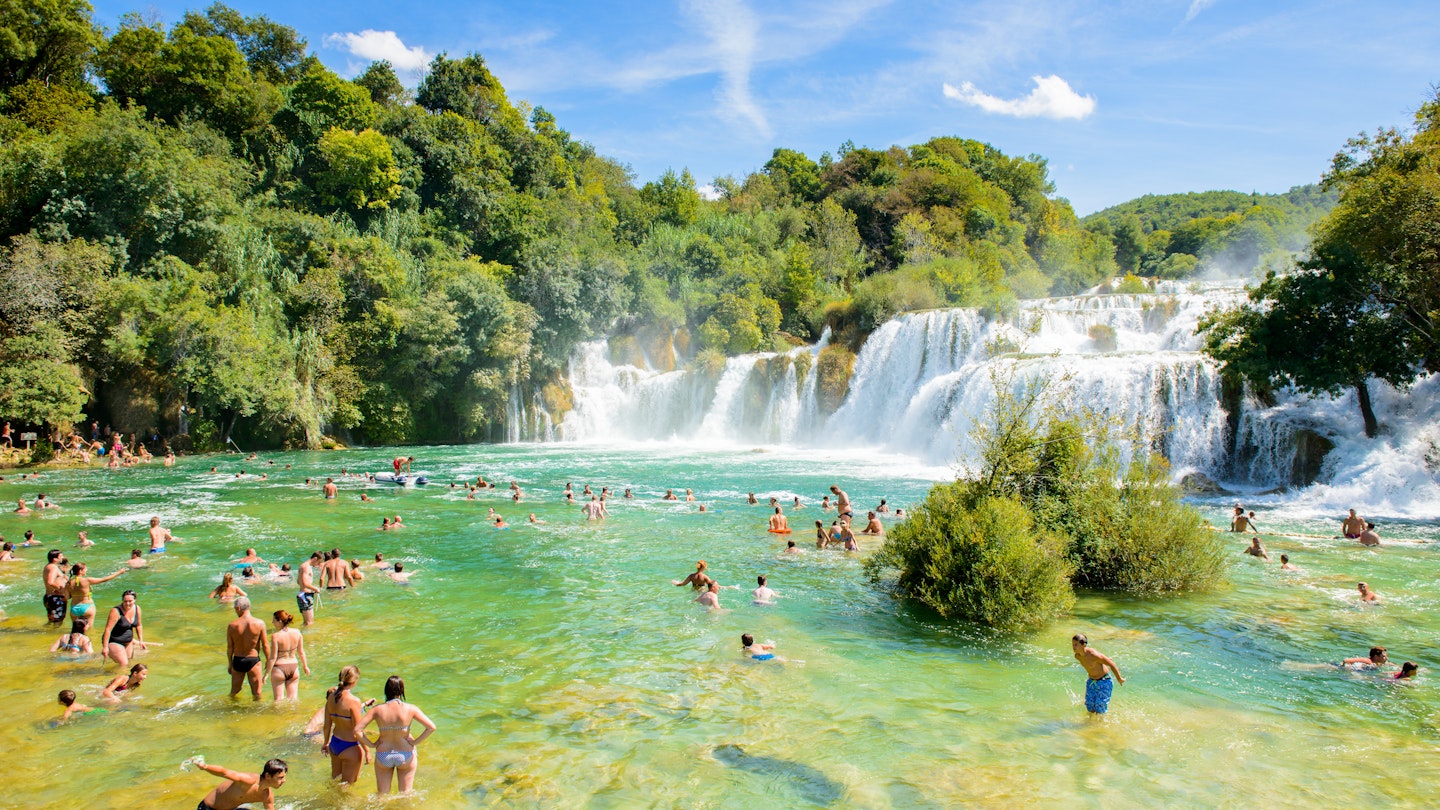Discover the Best National Parks in Croatia
Blessed with the crystal-clear turquoise waters of the Adriatic Sea and a large swath of the Dinaric Alps, Croatia’s natural landscape is lush, dramatic, and forever impressive. With eight national parks, Mother Nature is well preserved and protected here.
Whether you’re a photographer looking to capture cascading waterfalls, a family in need of an easy-to-access green space, or simply a traveler looking for a forest to get lost in, these are Croatia’s best national parks.
Krka National Park: An Unmissable Destination
One of the country’s most beautiful destinations, Krka National Park takes its name from the Krka River, which winds through the Dalmatia region. The park covers 109 sq km (42 sq miles) and is home to 16 cascades, including Europe’s largest travertine waterfall, but it’s the fabled collection of seven that draws most visitors.
Postcard-famous Skradinski Buk is the highlight, though the Roški Slap cascade is equally remarkable. Please note that swimming is no longer permitted in these areas.
Visovac Monastery, iconic in its beauty, is situated on a small island in the center of the Krka River, while another top site is the Serbian Orthodox Krka Monastery, founded in the Middle Ages and renowned throughout Croatia. Boats to this monastery depart from Roski Slap, and during summer and autumn, there are guided tours covering the building’s long history and intricate architecture.
Although guided tours of the park are available from nearby Šibenik, having your own transportation enables you to explore at your own pace. The entry fee includes a guided overview of the grounds, and there are also private tours that combine wine tasting in the Šibenik area with a trip to the falls, a popular option.
Plitvice Lakes National Park: The Waterfall Wonderland
Located in the center of the country, two hours from Zagreb and three hours from Split, the Plitvice Lakes National Park is the first national park in Croatia and continues to remain the largest.
This magnificent lake system boasts geological intricacy and otherworldly beauty, featuring 16 interconnected, terraced lakes created by tufa barriers (natural deposits of calcium carbonate) that formed natural dams and rivulets, plus over 90 waterfalls and a swirling network of pools.
With its balance of crystal-clear waters, green meadows, and dense forests, the park is home to lynx, brown bears, grey wolves, and a broad range of plant, flower, and tree species. Guided tours are offered from Zagreb, Zadar, and Split.
Mljet National Park: The Tranquil Escape
This peaceful protected area covers a third of car-free Mljet Island, located 37km (23 miles) off the coast of Dubrovnik in the Adriatic Sea, where Ulysses was said to be held captive for seven years in Homer’s Odyssey. Flanked by two beautiful saltwater lakes, Veliko and Malo Jezero (Large and Small Lake), the former is home to a 12th-century Benedictine monastery that rises from the tiny islet of Sveta Melita.
The park is intertwined with cycle paths and walking routes, such as the Pomena Trail, a relaxing five-hour semi-circular hike along the northernmost edge of the park that passes through gorgeous bays. Most visitors navigate the region via kayak, canoe, and the occasional scooter, allowing for delightful stops at seafood restaurants like Konoba Soleta and family-run inns, enhancing the culinary experience.
Brijuni National Park: Adventure Awaits
The best way to explore Brijuni National Park – a stunning 744-hectare (1838-acre) archipelago comprising 14 Istrian islands – is by yacht or ferry. Noteworthy attractions include over 200 dinosaur footprints found at Cape Vrbanj and Cape Ploce on the island of Veliki Brijun, which also features rolling green meadows, ancient architecture, and a safari park with zebras, elephants, peacocks, and more.
Park tickets can be purchased at the National Park office in Fažana, a quaint town on Istria’s southwestern coast. Admission includes a guided tour, a train ride around the island, the round-trip boat ride from Fazana to Veliki Brijun, and visits to the safari park, Mediterranean garden, and the park’s famous 1600-year-old olive tree.





